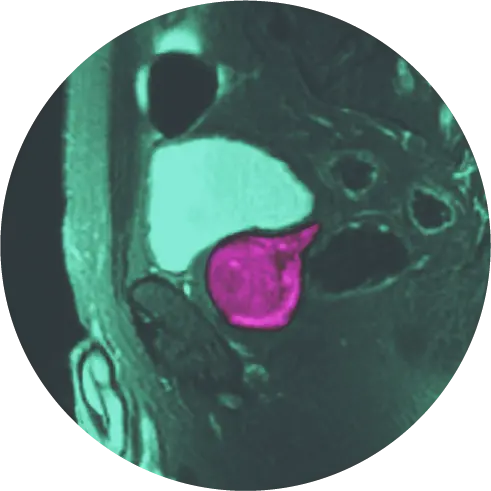Choosing a treatment option for prostate cancer is never an easy decision. There are multiple courses of action available, and breakthroughs continue to provide new options to patients. Your doctor and healthcare team will make recommendations, but the choice is personal and up to you to ultimately decide. There are many questions you might ask your doctor when considering prostate cancer treatments. Some of them include:
- Why do you recommend this treatment over others?
- What is the goal of this treatment?
- How will this treatment affect my daily life?
- What are the possible short- and long-term side effects of this treatment?”
Maintaining Your Quality of Life after Prostate Cancer Treatment
Life after prostate cancer treatment will include appointments, tests, procedures, and recovery days, as well as emotional impact. Treatments can come with frightening side effects like urinary incontinence or erectile dysfunction. However, newer treatment options like laser focal therapy or TULSA-Pro offer minimally invasive options compared to more traditional prostate cancer treatments such as radical prostatectomies. Long-term effects are a huge concern for patients considering prostate cancer treatment options, and electing treatments with a lower risk of these effects can bring peace of mind to patients and their families.
Let’s explore some of the prostate cancer treatment options that can help you preserve your quality of life after your procedure.

Laser Focal Therapy
Laser focal therapy is a minimally invasive procedure that allows doctors to target and destroy cancerous areas of the prostate without causing damage to the surrounding non-cancerous areas. It is guided by MRI technology, which enables doctors to monitor changes in real-time and ensure the laser’s precision and accuracy. This treatment option is best suited for those who have prostate cancer in one area of the prostate with low-to-intermediate risk of recurrence.1
Laser focal therapy reduces the risk that the treatment will cause urinary, sexual, or bowel-related side effects compared to treatments like a radical prostatectomy or radiation.2 Traditional treatments that target the whole prostate gland can carry a 25% risk of urinary incontinence and a 50% risk of erectile dysfunction. These risks are reduced to less than 1% with laser focal therapy.3 Reducing the risks of these side effects can drastically improve a patient’s quality of life, self-image, and relationships with partners and family.
TULSA-Pro
TULSA-Pro, or transurethral ultrasound ablation, is another minimally invasive treatment option for prostate cancer. TULSA-Pro is radiation and incision-free. It uses ultrasound technology that generates heat to destroy cancerous tissue in the prostate. TULSA-Pro can target a specific area of the prostate or the whole gland while protecting nerve bundles or structures that provide important functions. TULSA-Pro can cause side effects like pain or discomfort in the area or blood in urine, but side effects like incontinence or erectile dysfunction are greatly reduced compared to a radical prostatectomy or radiation.4
Cryotherapy
Cryotherapy for prostate cancer freezes prostate tissue, causing the cancer cells to die.5 Thin metal probes are inserted through the skin and into the prostate. The probes are filled with a gas that causes the nearby prostate tissue to freeze.
Cryotherapy might be used to treat early-stage prostate cancer that is confined to one part of the prostate when other treatments aren’t an option. Cryotherapy for prostate cancer can also be used when the cancer has recurred after initial treatment.
High-Intensity Focused Ultrasound (HIFU)
High-Intensity Focused Ultrasound is a minimally invasive procedure that uses ultrasound waves to treat prostate cancer by focusing on the exact tissue that requires treatment.6 This treatment does not involve radiation and does not require incisions. Smaller and less aggressive cancers are good candidates for treatment with HIFU.
Prostate Cancer Treatment Without Quality-of-Life Changes
Both laser focal therapy and TULSA-Pro are repeatable procedures, meaning that patients who need additional treatment can undergo the procedures a second time or consider alternative treatments. These minimally invasive treatments are a great option to fight prostate cancer while reducing the risk of life-changing side effects. When choosing the right prostate cancer treatment, patients should consider minimally invasive options to preserve their quality of life.
If you’re ready to explore minimally invasive prostate cancer treatment options, please reach out to our prostate experts at HALO DiagnosticsTM today. We’ll provide you with a free consultation and determine whether you are a qualifying candidate for any of the previously mentioned procedures.
References
2 https://www.ncbi.nlm.nih.gov/pmc/articles/PMC4071166/
3 https://www.halodx.com/prostate/prostate-cancer-treatment/
4 https://www.uclahealth.org/sites/default/files/documents/TULSA-FAQs.pdf
5 https://www.mayoclinic.org/tests-procedures/cryotherapy-for-prostate-cancer/about/pac-20384740
6 https://my.clevelandclinic.org/health/treatments/16541-hifu-high-intensity-focused-ultrasound




